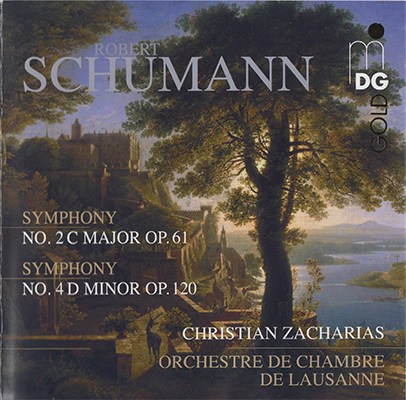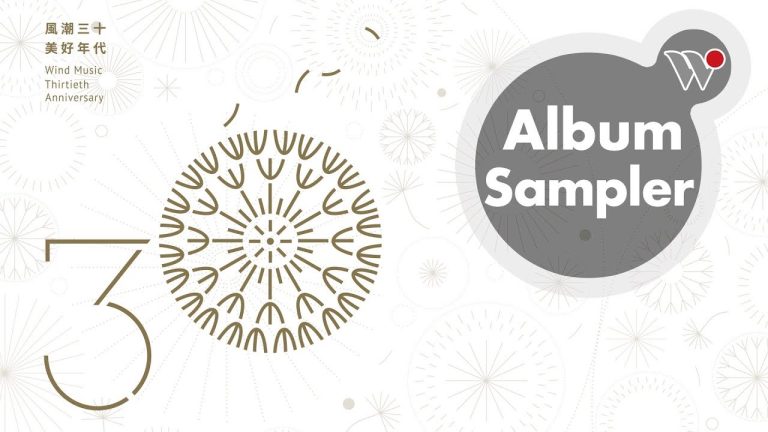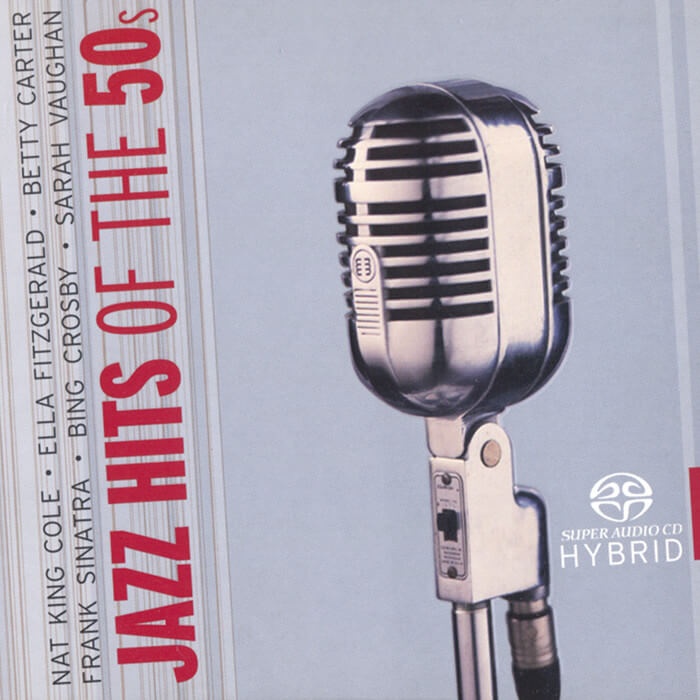
Zacharias – Robert Schumann: Symphonies No. 2 & 4
Classical Orchestra, Selection / September 10, 2017

SCHUMANN: Symphony No. 2 in C Major, Op. 61; Symphony No. 4 in D Minor, Op. 120 – Orch. de chambre de Lausanne/ Christian Zacharias – MDG multichannel SACD (2+2+2) MDG 904 1745-6, 64:51 [Distr. by E1] ****1/2:
Schumann once posed the question wither sonata form after Beethoven? The older master’s innovations in his late sonatas, quartets, and symphonies had redefined the sonata, taking it to its apogee as a form but also, Schumann feared, to a point of no return. And yet Schumann did revisit sonata form, hoping in his symphonies to say something in fresh musical language and with fresh ideas as to architecture.
He probably got some inspiration from Mendelssohn, whose Second Symphony employed cyclic form on a limited scale and whose Third Symphony is marked by an attempt at unity through a continuous flow from movement to movement and boldly introduces entirely new material at the end of the finale. Schumann follows suit in the finale of his Symphony No. 2 and creates unity in the work through a motto figure that appears at the very beginning and recurs in subsequent movements. The Fourth Symphony, his most radical attempt at symphonic integration, follows the continuous-flow model of Mendelssohn’s Third and achieves unity through the metamorphosis of the opening theme, the transmogrified melody acting as the principal theme in each of the subsequent movements.
Except for the structural innovations in these two works, they’re very different in character. The relatively short Fourth Symphony could almost be described as a fantasy for orchestra, and I’ve even read that Schumann toyed with the idea of introducing a mandolin in the piece, which would have underscored this fact. On the other hand, there is a classic tragedy-to-triumph program behind the Second Symphony. In the mid-1840s Schumann suffered near-incapacitating bouts of depression and later confessed that the symphony reflects his morbid condition at the time as well as his attempt to mobilize himself against the forces of despair. Hence, the motto theme that appears in the trumpets at the very start of the work could be seen as a call to action; it recurs in the second and fourth movements, briefly in the second, brazenly, heroically in the fourth, signaling a hard-won victory. This is Schumann’s most personal symphony and, I’ve always thought, his finest.
On the other hand, Schumann’s Fourth Symphony was marked not by a sense of triumph at its premiere but of failure. It made such a poor impression on its first audience—probably because of Schumann’s radical ideas of form in the symphony—that the composer decided to shelve it. Ten years later, in 1851, while acting as music director in Düsseldorf, Schumann revised the work, publishing it as his Op. 120. It’s the version usually heard today— though the 1841 version has had its adherents over the years, including Brahms, wo found its orchestration more transparent and colorful. Some critics conclude that the thicker orchestration in the later version is the result of Schumann’s deficiencies as a conductor. By doubling the parts, he ensured that if one instrument or group of instruments failed to come in at the right time, another would probably do the trick. The trouble with the first version of the symphony is that the all-important transition from the scherzo to the finale is halting and awkward, while it is majestic and highly effective in the 1851 version. So, gains and losses.
Actually, the second version sounds sprightly, not at all heavy, in this rendition by Christian Zacharias. The use of a chamber orchestra gives us the best of both worlds since we can enjoy the compositional superiority of the second version without the heavy aftertaste of Schumann’s Düsseldorf-era orchestration. With the Second Symphony the benefits are less obvious. Schumann’s orchestration is at its most effective in this symphony, and he builds some mighty climaxes in the first and fourth movements that a chamber orchestra can’t do full justice to. On the other hand, Zacharias’s interpretation is a breath of fresh air—straightforward, unaffected, emotionally on-cue, and the orchestra responds with verve and color. This is an excellent performance even if it seems a bit small-scale at points.
Producer and recording engineer Werner Dabringhaus does excellent work in the Métropole of Lausanne. Since the CD cover notes this as Volume 1, we can expect the First and Third Symphonies to follow. That should be worth waiting for. I hope Zacharias and his band will be given further assignments; this SACD speaks well to the partnership.
—Lee Passarella audaud.com (转载地方)
专辑曲目:
1 – Symphony No.2 op.61 – Sostenuto assai – 3:15
2 – Symphony No.2 op.61 – Allegro ma non troppo 9:03
3 – Symphony No.2 op.61 – Scherzo. Allegro vivace – Trio I – Trio II 6:59
4 – Symphony No.2 op.61 – Adagio espressivo 8:38
5 – Symphony No.2 op.61 – Allegro molto vivace 8:21
6 – Symphony No.4 op.120 – Ziemlich langsam 1:36
7 – Symphony No.4 op.120 – Lebhaft 9:18
8 – Symphony No.4 op.120 – Romanze. Ziemlich langsam 3:18
9 – Symphony No.4 op.120 – Scherzo. Lebhaft 4:45
10 – Symphony No.4 op.120 – Langsam – 1:27
11 – Symphony No.4 op.120 – Lebhaft 8:09
>> Album Download Link <<



